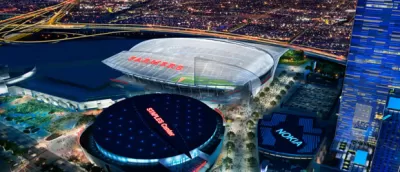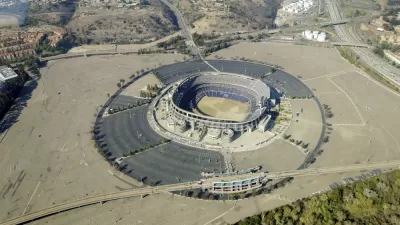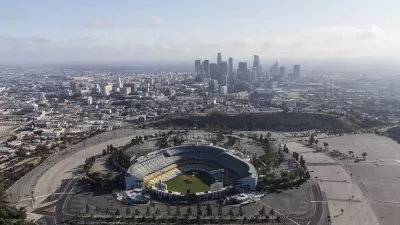With as many as a half-dozen groups vying to develop an NFL stadium in Los Angeles, things were bound to get ugly. And they did. A report warns of a possible terrorist attack at one stadium site. The report's publisher? Backers of a rival stadium.

The specter of terrorism barely existed in 1995. That's the year when the Raiders and Rams both bolted from Los Angeles, to the chagrin of the city's football fans. Since then, countless stadium proposals, rumored moves, and hoped-for expansion teams have come and gone. Lately, serious proposals, including one associated with the (St. Louis) Rams, seem to be gaining traction.
AEG, the longtime backer of a stadium proposal for downtown Los Angeles, has gone to the unusual length of citing terrorism as a reason to oppose a proposed stadium in Inglewood. That stadium would be under the flight path of LAX, and AEG got no less an authority than former Secretary of Homeland Security Tom Ridge to describe the dangers that the site poses.
Writing in the California Planning & Development Report, Josh Stephens takes issue not only with Ridge's conclusions and AEG's gamesmanship, but also with the entire concept of holding the public realm hostage to fears of terrorism. As real a threat as terrorism may be, writes Stephens, Americans should remember that public space should not be denigrated in the face of contrived paranoia.
"It’s just so convenient that someone proposes a competing stadium and that someone’s biggest, and increasingly most desperate competitor, just happens to produce a report linking that project with Americans’ single greatest fear. What terrifies me is that AEG thinks Angelenos are stupid enough to fall for this craven gambit."
FULL STORY: Stadium Foe Takes Page from Paranoia Playbook

Alabama: Trump Terminates Settlements for Black Communities Harmed By Raw Sewage
Trump deemed the landmark civil rights agreement “illegal DEI and environmental justice policy.”

Study: Maui’s Plan to Convert Vacation Rentals to Long-Term Housing Could Cause Nearly $1 Billion Economic Loss
The plan would reduce visitor accommodation by 25% resulting in 1,900 jobs lost.

Why Should We Subsidize Public Transportation?
Many public transit agencies face financial stress due to rising costs, declining fare revenue, and declining subsidies. Transit advocates must provide a strong business case for increasing public transit funding.

Paris Bike Boom Leads to Steep Drop in Air Pollution
The French city’s air quality has improved dramatically in the past 20 years, coinciding with a growth in cycling.

Why Housing Costs More to Build in California Than in Texas
Hard costs like labor and materials combined with ‘soft’ costs such as permitting make building in the San Francisco Bay Area almost three times as costly as in Texas cities.

San Diego County Sees a Rise in Urban Coyotes
San Diego County experiences a rise in urban coyotes, as sightings become prevalent throughout its urban neighbourhoods and surrounding areas.
Urban Design for Planners 1: Software Tools
This six-course series explores essential urban design concepts using open source software and equips planners with the tools they need to participate fully in the urban design process.
Planning for Universal Design
Learn the tools for implementing Universal Design in planning regulations.
Smith Gee Studio
Alamo Area Metropolitan Planning Organization
City of Santa Clarita
Institute for Housing and Urban Development Studies (IHS)
City of Grandview
Harvard GSD Executive Education
Toledo-Lucas County Plan Commissions
Salt Lake City
NYU Wagner Graduate School of Public Service




























